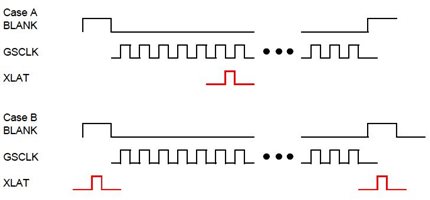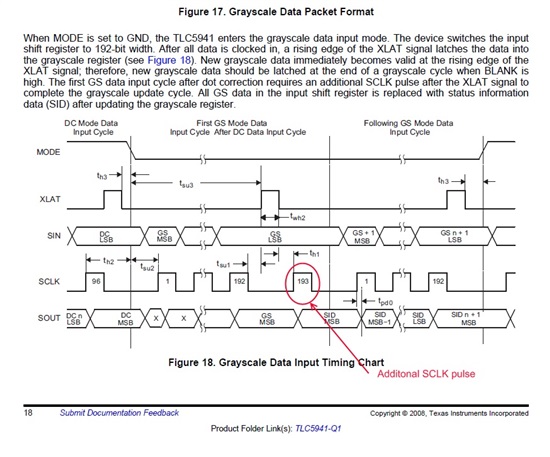A BLANK pulse is required to reset the counters used for the grayscale setting. The grayscale clock increments a counter which shuts off the port once the value set by the serial in data is reached. The blank line pulse is needed to reset the counter to begin the next PWM cycle. Unfortunately, when I want to reset the counters, the LED blink. Is there a different method to reset the counters? The software engineer made a modification to the pin configuration of the their micro that is driving the LED driver by changing the output slope from the original default 2MHz “output speed up” setting to a 10MHz option and the problem was solved, but is there a better way in hardware?
Thanks in advance,
Scott



